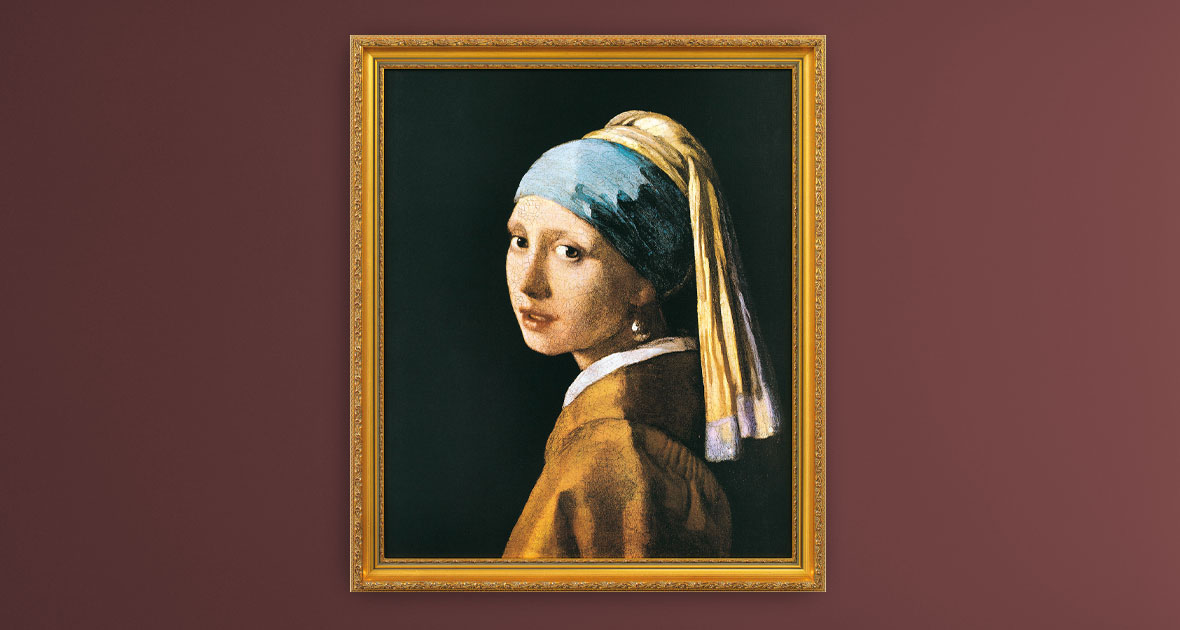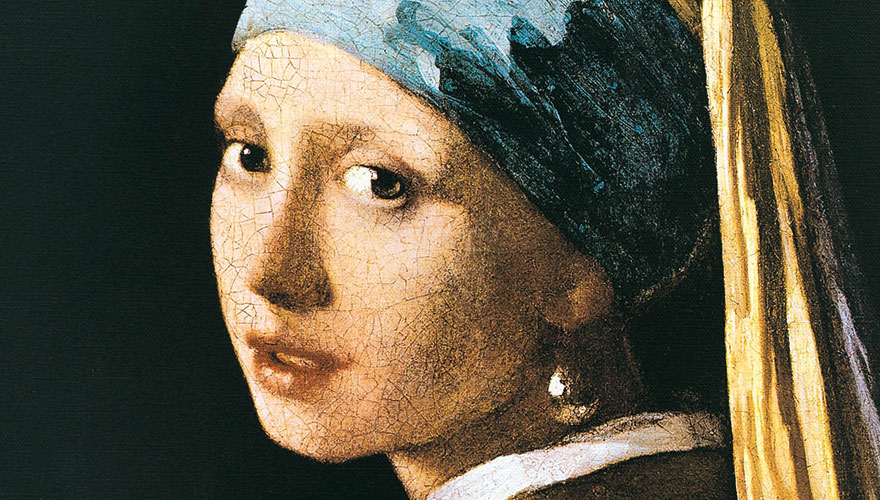
Girl with a Pearl Earring: Mysterious Key Work of the Baroque Epoch
She is probably one of the most famous women in art history: The "Girl with a Pearl Earring", painted by Jan Vermeer van Delft. Around 1667, the Dutch painter completed the picture, which is today considered one of the most important works of art of the Baroque epoch. The painting, which is also known as "Head of a Young Girl", "Portrait of a Young Woman with Pearl Earrings" and even "Mona Lisa of the North", was privately owned for a long time until 1902 when it was bequeathed to the Mauritshuis in The Hague by will. Since then, it has been part of the Mauritshuis collection and is a major attraction for the public.
The picture, which is only 45 centimetres high and 40 centimetres wide, is not only one of the most famous works of art of all time, but it has even inspired numerous authors. In 2003, Tracy Chevalier's novel "Girl with a Pearl Earring" was adapted into a film by Peter Webber starring Scarlett Johansson as the maid Griet and Colin Firth as Jan Vermeer.
Jan Vermeer - The Creator of the Pearl Earring Painting
Without a doubt, "Girl with a Pearl Earring" is the most famous painting by Jan Vermeer van Delft. Even though he is considered one of the most important Dutch painters of the Baroque epoch, there is comparatively little reliable information about his biography. He is said to have been trained as a craftsman but not as an artist. However, a surviving member of the Delft painters' guild testifies to the great reputation he enjoyed as a painter even during his lifetime. However, his today-known oeuvre is very small. There are only 37 paintings that can be attributed to him with certainty. The small number of paintings can be explained by the fact that Vermeer probably always took an extraordinarily long time for his work, and sometimes years passed before he had completed an artwork.
Vermeer's motifs included landscapes, history paintings and genre scenes. Many of his paintings show impressions of the everyday life of his contemporaries. For example, a maid at work or a painter in his studio. Vermeer attached great importance to perfect craftsmanship and worked out the details in his paintings very meticulously. In addition, he is still considered a master at depicting lighting conditions and perspectives in a particularly realistic way.
The Myth and Many Unanswered Questions About the Pearl Earring Painting
At first glance, the famous Pearl Earring Painting impresses with its liveliness and supposed realism. Given how perfectly the motif is worked out, it is natural to assume that Jan Vermeer had painted a portrait of a real person here. But appearances are deceptive: several aspects of the painting suggest that Vermeer was creating a masterly illusion.
First of all, we must mention the identity of the girl. There has been speculation about who she might be. There were rumours that she was one of Vermeer's daughters, and others suggested that she was a paid model. However, this question was never resolved. Today, experts assume that this painting is a so-called "tronie". Tronies, which first became popular in the 17th century, differ from portraits because they do not depict a real person. Instead, the tronie is intended to show a general type of person in a portrait-like style, or it serves as a study. Even though it seems obvious that real people also served as models for the tronies, the figures depicted always remain anonymous.
Not only the girl but also the eponymous pearl on her ear raises some questions. In particular, the size of the jewel makes one doubt that the painting is a reflection of reality. For example, if we use the girl's eyes as a scale, it is obvious that the pearl must have been exceptionally large. Since a real pearl of these dimensions would have been extremely precious and expensive, there are speculations that the piece of jewellery could rather be a glass bead or a silver-plated ball. Another possibility is that Vermeer deliberately shifted away from reality in his depiction and painted the pearl in an oversized format.

An Investigation in 2018 Brought Many New Insights
The famous Baroque painting holds many secrets. In 2018, a large-scale scientific investigation of the painting was expected to yield new and, above all, well-founded insights about the painting, the painter, and his working methods.
An interdisciplinary team of researchers spent two weeks examining the Pearl Earring painting in the Mauritshuis in detail. They used a variety of technologies such as state-of-the-art scanners, microscopes, and X-ray machines to analyse the work millimetre by millimetre and through all layers of paint. The great advantage of these procedures was that the painting did not have to be damaged, for example, by taking paint samples or particles from the canvas. The investigation and the subsequent analysis of the data obtained, which took about two years, yielded a number of new and sometimes surprising findings:
- The background of the painting is known to be very dark to black. Many art historical analyses of the painting agree with this fact and note that the other colours shine particularly brightly against this background. But the examination revealed a drapery and green colour. So, it can be assumed that Jan Vermeer originally did not paint a black surface behind the girl but a deep green curtain. However, the colours have faded over the centuries, and the curtain is no longer recognisable.
- Another detail was revealed during the examination of the girl's eyes. Jan Vermeer strove for a very realistic depiction in the Pearl Earring painting. It seemed even more strange that no eyelashes were visible around the girl's eyes. An X-ray scan now revealed that Vermeer had indeed painted the eyelashes with fine strokes. However, these faded over time due to chemical processes.
- The analysis of the pearl earring brought a particularly spectacular result. Until then, there were almost no doubts that the pearl on the ear was a piece of jewellery. However, the examination revealed that this was not the case. In fact, the pearl is missing the hook with which it should be attached to the ear. The pearl is, therefore, not really an earring in the true sense of the word, for it floats completely freely in space. It is unknown why Vermeer chose this depiction.
- The scientific analysis revealed for the first time with certainty which colours Jan Vermeer had used in the pearl earring painting. His colour palette consisted essentially of red, yellow, brown, blue, black, and white. Vermeer additionally used a conspicuous amount of ultramarine, for example for the headdress and the jacket. This is unusual in the sense that ultramarine was a particularly precious and, thus, extraordinarily expensive dye in the 17th century.
With the analysis of the painting in the Mauritshuis, the state of knowledge about the "Girl with a Pearl Earring" has been significantly expanded. However, the most important question of all for many people, namely who the girl in the picture is, has still not been answered.
